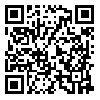Volume 3, Issue 2 (April 2019)
AOH 2019, 3(2): 339-345 |
Back to browse issues page
Download citation:
BibTeX | RIS | EndNote | Medlars | ProCite | Reference Manager | RefWorks
Send citation to:



BibTeX | RIS | EndNote | Medlars | ProCite | Reference Manager | RefWorks
Send citation to:
Samiei S, alefi M, alaei Z, Pourbabaki R. Risk Factors of Low Back Pain Using Adaptive Neuro-Fuzzy . AOH 2019; 3 (2) :339-345
URL: http://aoh.ssu.ac.ir/article-1-101-en.html
URL: http://aoh.ssu.ac.ir/article-1-101-en.html
1- Tehran University of Medical Sciences. School of public health. Occupational Health Engineering
2- Tehran University of Medical Sciences. School of public health. Occupational Health Engineering ,yasin.babaki@gmail.com
2- Tehran University of Medical Sciences. School of public health. Occupational Health Engineering ,
Abstract: (4718 Views)
Background: Musculoskeletal disorders are one of the most common factors that lead to occupational injuries among hospital staff. Considering the key role of hospital staffs in providing health services to patients, this study was conducted to assess risk factors that are effective on low back pain and the use of adaptive neuro-fuzzy inference system (ANFIS) model to predict it. Methods: This cross-sectional study was conducted in 90 nurses of the Isfahan hospitals in 2018. First, the risk factors that affect pain in the lumbar region was assessed, then a model with the precision of 0.91% to predict low back pain was developed using the ANFIS by the MATLAB2016a software. Results: First, linear regression model showed four risk factors repetitive movements, long-standing, bending of the back, and carrying heavy objects were the most significant ones compared to other risk factors associated with musculoskeletal disorders. After a study of these risk factors in the ANFIS, various tests were conducted and the best model with a confidence level of 91% was selected as the model. Conclusion: The ANFIS can be used as an appropriate tool to predict lower back pain.
Send email to the article author
| Rights and permissions | |
 |
This work is licensed under a Creative Commons Attribution-NonCommercial 4.0 International License. |







